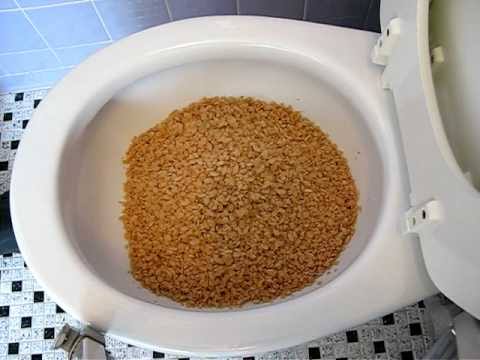Are You Able to Flush Food in the Toilet?
Are You Able to Flush Food in the Toilet?
Blog Article
We've encountered the article on What Can Happen If You Flush Food Down the Toilet? below on the web and believe it made perfect sense to relate it with you in this article.

Intro
Many individuals are typically confronted with the predicament of what to do with food waste, especially when it comes to leftovers or scraps. One usual inquiry that occurs is whether it's fine to purge food down the commode. In this post, we'll look into the reasons that people could think about purging food, the consequences of doing so, and different approaches for correct disposal.
Reasons that people could think about flushing food
Lack of awareness
Some people may not be aware of the possible harm brought on by flushing food down the toilet. They may erroneously think that it's a safe technique.
Benefit
Flushing food down the toilet might appear like a quick and simple option to dealing with undesirable scraps, especially when there's no neighboring garbage can offered.
Laziness
Sometimes, individuals may merely select to flush food out of large negligence, without considering the effects of their actions.
Effects of flushing food down the bathroom
Ecological impact
Food waste that ends up in rivers can add to pollution and damage marine environments. In addition, the water used to flush food can stress water sources.
Pipes issues
Purging food can lead to blocked pipes and drains, causing pricey pipes fixings and inconveniences.
Sorts of food that should not be purged
Fibrous foods
Foods with fibrous appearances such as celery or corn husks can get entangled in pipes and cause blockages.
Starchy foods
Starchy foods like pasta and rice can absorb water and swell, leading to clogs in pipelines.
Oils and fats
Greasy foods like bacon or food preparation oils should never be flushed down the commode as they can strengthen and trigger obstructions.
Appropriate disposal methods for food waste
Making use of a garbage disposal
For homes equipped with garbage disposals, food scraps can be ground up and purged via the plumbing system. However, not all foods are suitable for disposal in this way.
Recycling
Specific food packaging products can be reused, reducing waste and minimizing ecological influence.
Composting
Composting is an environment-friendly way to dispose of food waste. Organic products can be composted and utilized to improve soil for horticulture.
The value of correct waste monitoring
Decreasing ecological injury
Appropriate waste monitoring methods, such as composting and recycling, assistance reduce air pollution and preserve natural deposits for future generations.
Securing pipes systems
By staying clear of the technique of flushing food down the toilet, house owners can prevent costly pipes repair services and preserve the integrity of their pipes systems.
Conclusion
To conclude, while it may be tempting to purge food down the commode for convenience, it is very important to recognize the possible repercussions of this action. By taking on proper waste monitoring methods and disposing of food waste responsibly, people can add to healthier pipes systems and a cleaner environment for all.
FLUSH FOOD DOWN THE TOILET?
FLUSHING FOOD CAN CAUSE BLOCKED DRAINS IN YOUR HOME
All of the plumbing fixtures in your home are connected to the same sewer pipe outside of your home. This outdoor sewer pipe is responsible for transporting all the wastewater from your home to the Council sewer mains. Even small pieces of food that go down the kitchen sink can cause problems for your sewer. It should therefore be obvious that flushing larger bits of food, such as meat, risks a clog in either the toilet itself or the sewer pipes. Flushing greasy food is even more problematic because oil coagulates when it cools, coating the interior lining of your pipes.
THE TOILET IS NOT A BIN
Food isn’t the only thing that people shouldn’t be flushing down the toilet. People use the toilet to dispose of all kinds of things such as tampons, makeup wipes, dental floss, kitty litter and even underwear. Water goes to great lengths to educate residents about the high costs and stress placed on wastewater treatment systems simply from people flushing the wrong stuff down the toilet. It costs taxpayers millions of dollars each year, and homeowners thousands in blocked drain repairs.
FLUSHING FOOD IS A WASTE OF WATER
Flushing food is a waste of our most precious resource - water. In June this year Level 1 water restrictions were introduced to protect water supply from drought conditions. Much of New South Wales continues to be affected by prolonged drought with recent figures revealing up to 97 per cent of the state remains in drought. Depending on whether you have a single or dual flush toilet, every single flush uses between five and 11 litres of water. In the current climate this is a huge amount of water to be wasting on flushing food that should be placed in the bin (or better yet, the compost).
https://www.jabplumbingsolutions.com.au/blog/can-you-flush-food-down-the-toilet

I'm very fascinated with and I really hope you liked my blog post. Don't hesitate to set aside a second to promote this post if you liked it. Thank you for taking the time to read it.
Visit Website Report this page